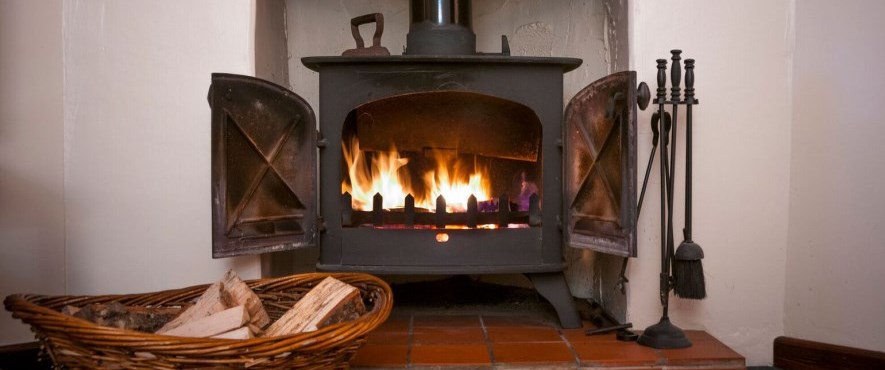Improperly installed and maintained wood stoves and fireplaces can lead to dangerous conditions putting your family and neighbours at risk. When purchasing a new wood stove or fireplace insert, look for the mark of an accredited certification agency ensuring the product has been tested and meets established safety standards.
Check with the Building Department and obtain the necessary permits prior to installing a wood stove, fireplace insert, or chimney. Always follow the manufacturer's installation instructions.
The Ontario Fire Code requires homeowners ensure their home heating appliances and chimneys are safe; this requires periodic inspections and maintenance.
Check your chimney and clear any obstructions at the start of the heating season, and make sure damper controls work properly, keeping smoke and toxic gases from building up inside the house. Check chimneys and flue pipes often for creosote and soot build-up and clean to prevent a chimney fire. Your chimney may have problems you can't see. If in doubt, consult a WETT (Wood Energy Technical Training) certified chimney sweep. This requires periodic inspections and maintenance.
Maintain an appropriate chimney cap on top of your chimney to protect against damage from rain or snow. Spark screens should be inspected regularly to make sure smoke can vent properly.
Ensure all joints in flue pipes are securely fastened with at least 3 screws. Where flue pipes are joined together, the small (crimped) end should point toward the appliance.
Keep combustible materials a safe distance away from wood stoves and fireplaces. Always use a properly fitting screen for your fireplace. Consult a WETT certified chimney sweep if walls get too hot.
Burn properly dried well-seasoned wood to reduce the risk of excessive creosote build-up from inefficient burning or smouldering fires. Store wood outdoors, stacked in an open area or shed away from the house or deck to provide good airflow that will assist drying.
Allow ashes to cool fully before cleaning them from your fireplace or wood stove. Use only metal, non-combustible containers to remove ashes from the appliance. Take them outside immediately and store well away from buildings on a non-combustible surface.
All homes with fuel-fired appliances should have a carbon monoxide (CO) alarm.
Contact Us


